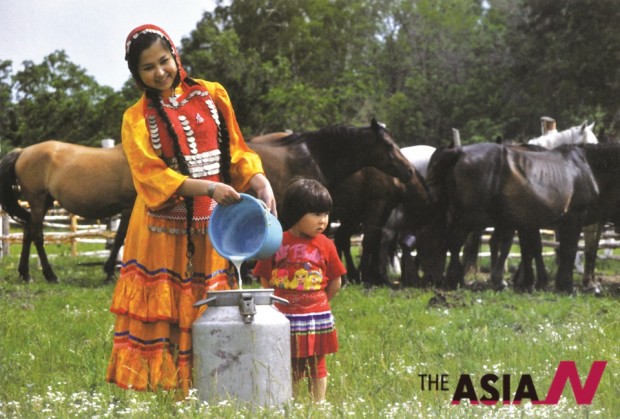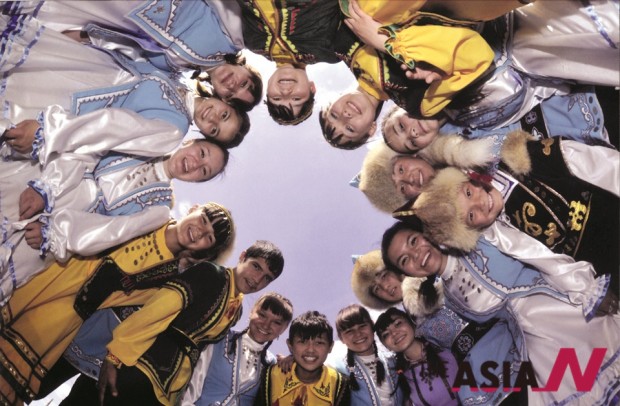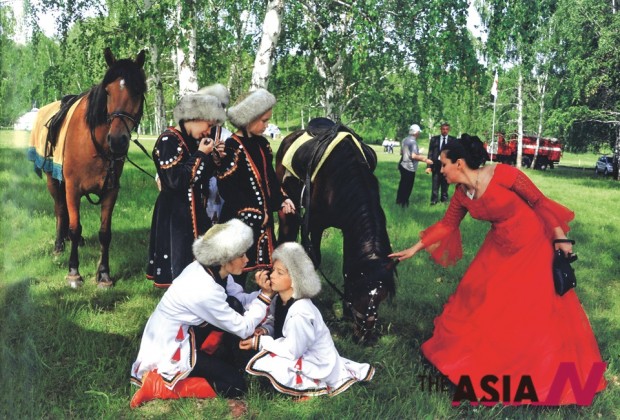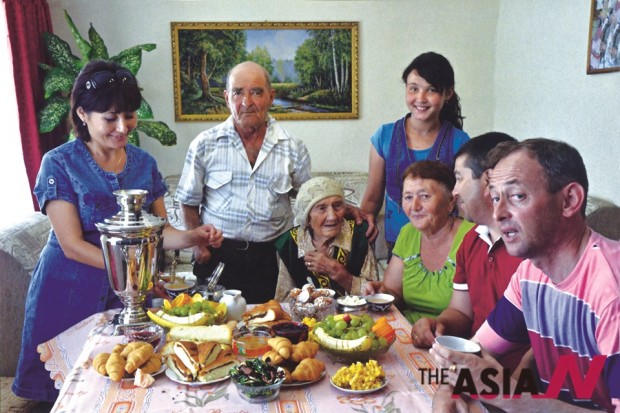쿠웨이트 기자, ‘광활한 동토’ 러시아서 역사의 숨결 느끼다

* ‘아시아엔’ 해외필진 기고문의 한글요약본과 원문을 함께 게재합니다.
[아시아엔=아시라프 달리 아시아엔 중동지부장] 러시아는 21개 공화국, 49개 주 등 총 89개의 연방 주체로 구성된 국가다. 이 중에서도 러시아 서부에 위치한 이웃 바시키르공화국(이하 바시키르)과 타타르스탄 공화국(이하 타타르)의 유대는 특별하기로 유명하다. 두 공화국은 러시아 서부를 흐르는 유럽에서 가장 긴 강 ‘볼가강’ 유역에 인접해있다. 이들 국가는 지리적으로 가까운 만큼 친밀한 외교관계를 맺고 있다.
두 국가는 역사적으로도 인연이 깊다. 타타르에 거주하는 러시아 민족 타타르인은 러시아의 대표적인 튀르크계 민족으로, 러시아 전체 인구의 4%를 차지할 정도로 인구가 많다. 전체 타타르인 중 약 36%가 현재 타타르에 거주하고 있으며, 많은 타타르인들도 옛부터 인근 바시키르를 포함해 시베리아, 극동 지역 등에서 살아왔다. 즉, 두 국가에는 이웃인 동시에 같은 뿌리를 지닌 민족들이 한데 모여 살고 있는 셈이다.
매년 바시키르에서는 러시아를 포함한 이탈리아, 터키, 이란, 리투아니아 등에서 온 전세계 유명 사진작가들의 작품전이 개최된다. 이들은 바시키르인들의 다양한 일상모습과 도시 및 시골 풍경들을 카메라에 담은 작품들을 전시한다. 이들이 자주 찾는 명소는 ‘사반투이’ 축제 현장이다. 매년 수확철이 다가오면 바시키르인, 타타르인들이 모여 가족과 함께 죽을 나눠먹고 뛰어넘기 등 을 펼치며 즐거운 시간을 보낸다. 이날만큼은 세대를 넘어 남녀노소가 모두 한 마음이 되어 축제를 즐긴다.
화보집 <시베리아에서 크림반도까지, 그 뿌리를 찾아서>(In Search of the Roots… from Siberia to the Crimean Peninsula)로 유명한 리팟 야코보는 바시키르 사진전에 작가로 참여한 최초의 타타르인이다. 그의 작품들에서는 타타르인을 바라보는 작가의 섬세한 통찰과 따뜻한 시선을 엿볼 수 있다. 그는 “타타르인의 긴 역사와 문화가 지금까지 이어지고 있어 기쁘다”고 말했다. 또한 야코보는 바시키르에 대해 “웅장한 산과 유유자적하게 흐르는 강, 호수 등이 어우러져 놀라운 자연경관을 만든다”면서 “지상낙원이 존재한다면 이 같은 모습일 것”이라고 찬사를 보냈다.

Horses, Relatives and Plains of Bashkortostan
Mystery surrounds the countries whose names still carry a slice of the past. Some witnessed major incidents which made them increasingly familiar to the outside world; others are waiting their turn to go in history. As Tatarstan, a Russian Federation republic, has become a popular destination, Bashkortostan, its neighbor and partner in the Federation, deserves to be a key station on the Silk Road as well. It is the land of horses and plains. A number of Tatars live in Bashkortostan and we frequently hear about those who were born and raised in its capital Ufa and studied and worked in Kazan, its neighbor’s capital. You are thus between the two cities, the same way as between Cairo and Alexandria, and between the rivers of both republics, as between Tigris and the Euphrates. If you have to travel 800 km from Moscow to reach Kazan, covering a further distance of over 300 km will take you to Ufa, which is about 1,169 km from Moscow.
Political borders alone do not form the ties between Tatarstan and Bashkortostan, as both are found in a belt called The Volga Basin Republics. The Volga is the longest river in Europe and flows from the north of the old continent into the Caspian Sea. It was there that the historical tribes known as Muslim emirates came from eastern and central Asia before the region became part of the Russian Empire and the Soviet Union later. (The republic was established on 20th March 1919 as part of the Union of Soviet Socialist Republics), and seven autonomous republics, the largest of which is Bashkortostan (Bashkora or Bashqorstan in Arab historical records).

In the Volga Basin
In addition to Bashkortostan and Tatarstan, there are five other republics: Chuvash, Mordovia, Udmurtia, Mari and Orenburg. Bashkortostan is 143, 500 kilometer square in area. We know how the Mongol tribes embraced Islam following their victory over the Islamic caliphate during the 14th century as their king Baraka Khan adopted Islam and named himself the “Happy King”. That made Islam gain access beyond central Asia, reaching the Crimea, penetrating southern Russia’s steppes north of the Black Sea and the Caspian Sea up to western Siberia. As the journey of Ibn Fadlan, the Abbasid Caliph’s envoy marks the date of the advent of Islam in Tatarstan eleven centuries ago, its spread round the Volga Bulgars in the basin of the seven republics documents Islam in Bashkortostan as well.
The republic of Bashkortostan organizes an annual photographic exhibition featuring pictures taken by Russia’s and the world’s most eminent photographers. The great occasion which gathers them is the annual harvest festival (Sabantuy), which represents the top family reunion and the culmination of a general effort, not only in agriculture but all areas of human endeavor. The festival includes historical and unique competitions in which all generations participate. But the photographers, some of whom visit the country for the first time, are attracted by virgin nature and fascinated by friendly smiles outside the city ad celebrations. They go down to villages, run after their dreams in the steppes and only hunt wild horses with cameras, memorializing the many moments they lived.
In the collection of paintings and scenes included, each photographer is able to play his own tune, choose the colors he likes and convey his vision, reformulating place and man as well as time. Not only are these local lenses but they are also eyes from Turkey, Italy, Iran, Lithuania as well as Bashkiria, Moscow, Tatarstan and Chelyabinsk. In this way, the tune is of an opera of colors, with a variety of solo and group voices. I wish our Arab region adopted such a project; I deem it important to see ourselves through the eyes of our neighbors and the world at large.
As Bashkir photographer Ramil Kilmamatou says, Bashkortostan is the heart of Eurasia, that’s why its ethnic diversity is regarded as a mirror of a chest which embraces the world, “We love our land with all its richness, beauty and delicacy, and we are proud of it. The pictures are a rediscovery of the treasures of this Bashkir world.” He is the head of the department of photography of the Russian Association of Photographers and was awarded the national Salavat Yulaev prize in recognition of his works, which follow man’s spirit in moments of seriousness and at play and feelings of contemplation, fear and yearning.

Under more than one flag
Bashkir people are the theme of photographer Algimantas Aleksandrovic (Lithuania). They give him the best impression, thanks to their warm hospitality, smiling faces, loving to be the subject of the pictures he takes and their sense of humor which spreads in the place like the whiff of hot bread. Looking at his picture of a woman carrying a copy of the Glorious Quran reciting Al-Fatiha, asking God to have mercy on the souls of Bashkir martyrs who died in battles the country fought under more than one flag, one cannot help but wonder that even through all the divisions and invasions, their pain remains one and the same.
Vitali Voronin (Chelyabinsk, Russia) has been taking pictures in Bashkortostan for five years, which made him love its nature and reflect it in his works. Monitoring customs and traditions over the seasons led him to capture rare moments and made him captivated by endless beauty. His fellow photographer Valery Zirokov, who comes from the same area, also feels that four days of photography were exceptionally fruitful: such different places and new scenes that he didn’t delete even a single photo! Not only did Zirokov’s pictures portray his characters but captured his colleagues as well.
I have frequently seen Turkish photographers sharing in Tatar cultural events. It was therefore not strange to meet their colleagues here, the first of whom was Ibrahim Demirel, who, in addition to being a photographer, has written several books on photography, teaches photography at Gazi University and has his own gallery. In 1998, he received a prize from the Art Association in Ankara and the Trova Award in 2004. He was not exaggerating when he said that he visited more than 60 countries around the world and curated his own exhibitions in some of them, but his first visit to Bashkortostan fascinated him with its green spaces and welcoming people. One of his aerial shots outlines Bashkortostan’s geography where small rivers and streams touch houses and quiet empty spaces. More than that, he is especially fond of timbered house windows, one of the characteristics of the Bashkir countryside. He made a collection of these windows, which are timber framed with a screen reflecting internal decorated curtains, as well as blooming flowerpots on external windowsills.
His Turkish colleague Sami Turkai is keenly interested in documenting local crafts in Bashkortostan and believes that this country cannot be envisaged without horses and timbered houses with distinctive carvings, vast fields and beautiful forests.
The Iranian photographer Hadi Navid is interested in motion, and his pictures sum up his long experience since he organized his first exhibition at Tehran University in 1977. Like all others, he was extremely impressed by the people’s hospitality. Their compatriot Najib Evlis was so deeply involved in family and pastoral daily scenes for the young and old that you would think he was born there.
The two Italians Francesco Giorgio and Eduardo Ramela gave their touches beautifully. The former is a traveler who took it upon himself to carry Bashkir’s love to his people in Piedmont (Italy); the latter, who is also an Internet designer, said his love of small villages exceeded all limits, an impression which he will maintain as long as he lives. Giorgio has recorded the daily life of children and adults in seriousness and at play and in places of employment; Ramela was overwhelmingly impressed by village scenes.
In search of the roots
The first Tatar who took part in this grand event was the renowned photographer Rifhat Yakupov, who was introduced to the audience at Al-Arabi’s Forum “Arab Culture on the Silk Road”, where he shared his album ‘In Search of the Roots… from Siberia to the Crimean Peninsula’. Yakupov is the son of Tatar culture, the descendant of Turkic tribes, which moved on the Silk Road from eastern Asia to central Europe. His pictures sum up half a century of his work: gaining a profound insight into the life of the people who today enjoy a federal entity: Tatarstan, a Russian Federation Muslim republic. If we are looking for a common ground which these cultures share, these pictures will reveal that. If we want a testimony of history about the stages of settlement, displacement and recovering the memory of land and religion, Tatars’ journey in search of the roots from Siberia to the Crimea is the best evidence that leads us in black and white to colors of emotions attesting to the rich history of these people and preservation of their traditions through thick and thin. It was not Yakupov’s first visit to Ufa; he has held several exhibitions there and documented the Tatars who make up the majority of its citizens. He says Bashkortostan, with its mountains, rivers, lakes, pastures and forests, represents a real surprise: it is part of paradise on earth. He is happy that the Turkic’s and Tatars’ deep-rooted rituals are still alive.






